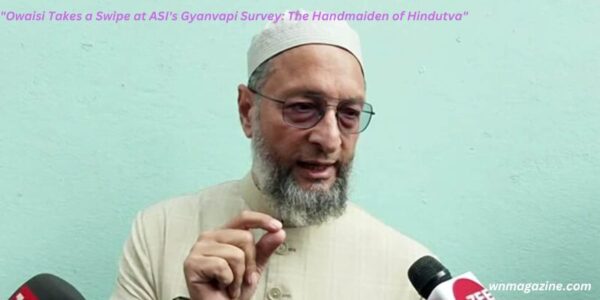“Owaisi Takes a Swipe at ASI’s Gyanvapi Survey: The Handmaiden of Hindutva”

"Owaisi Takes a Swipe at ASI's Gyanvapi Survey: The Handmaiden of Hindutva"
In the ongoing Gyanvapi Masjid case, Vishnu Shankar Jain, representing the Hindu side, asserts that the Archaeological Survey of India (ASI) has unearthed remnants of a substantial Hindu temple within the mosque premises.
Asaduddin Owaisi, president of the All India Majlis-e-Ittehadul Muslimeen (AIMIM), challenges the ASI report, branding it speculative and undermining scientific scrutiny. Jain publicly disclosed the 839-page report, violating the court’s order prohibiting such disclosures.
Also Read: Wellhealth Ayurvedic Health Tips
According to the ASI report, scientific studies, architectural remnants, exposed features, artifacts, inscriptions, artwork, and sculptures suggest the existence of a Hindu temple predating the current Gyanvapi Masjid.
The report implicates Aurangzeb, the Mughal emperor, in the destruction of the temple during the 17th century. It reveals that parts of the earlier structure were repurposed in constructing the mosque, using bell-adorned pillars, lamp niches, and temple inscriptions. The ASI asserts that the pre-existing framework can be identified as a Hindu temple based on its art and architecture.
The Anjuman Intezamia Masjid Group, responsible for the Gyanvapi mosque, states that they have not yet had the opportunity to review the ASI report. The Gyanvapi dispute, rooted in history, gained recent attention when five women sought the right to worship the Maa Gauri Sthal within the complex without interference.
The controversial ASI examination was initiated in response to a district council order last July to determine whether the mosque was constructed over the pre-existing structure of a Hindu temple.
Also Read: well health tips in hindi wellhealth
The Muslim side contends that the structure identified is a ceremonial ablution fountain, while the Hindu side argues that the 17th-century mosque was built over an earlier temple, with claims of discovering a shivling during the examination. The Supreme Court’s orders currently keep the area sealed.







